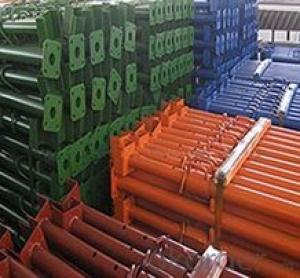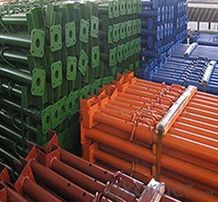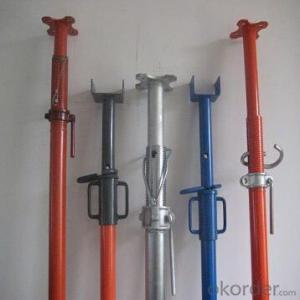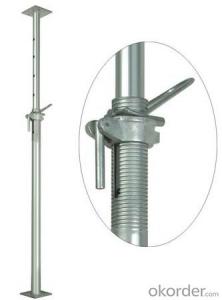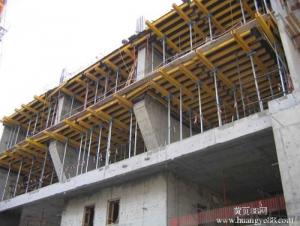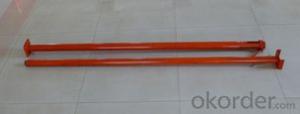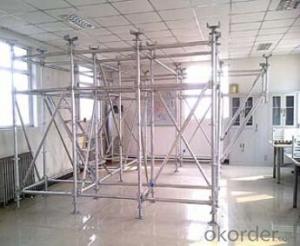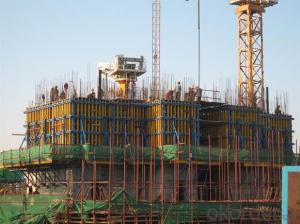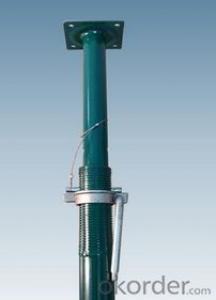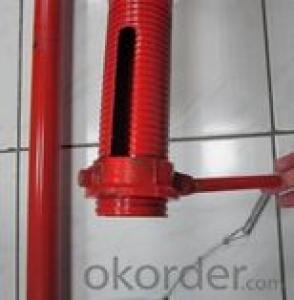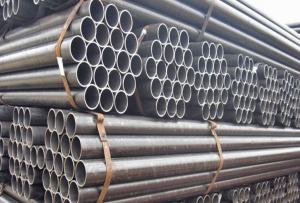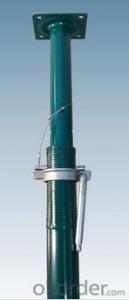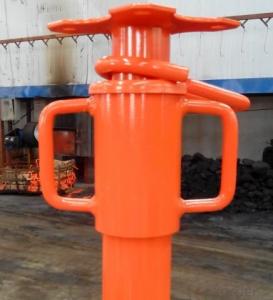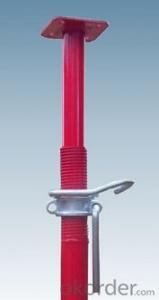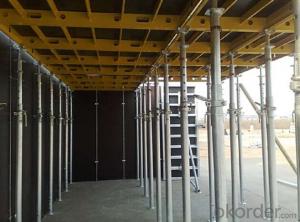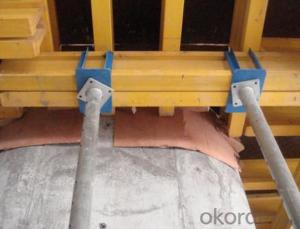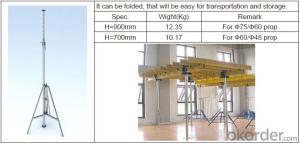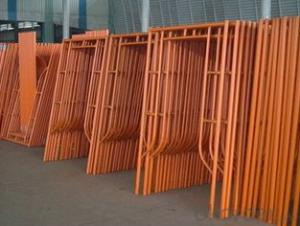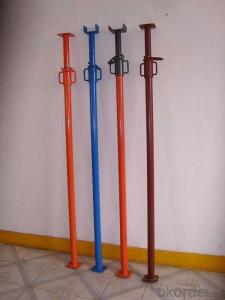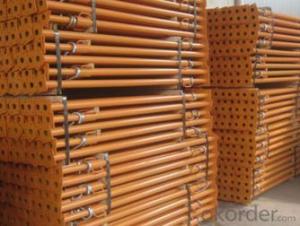Galvanized pipe support props construction steel prop system
- Loading Port:
- Tianjin
- Payment Terms:
- TT OR LC
- Min Order Qty:
- 10000 PCS
- Supply Capability:
- 10000 PCS/month
OKorder Service Pledge
OKorder Financial Service
You Might Also Like
Quick Details
| Model Number: | MTH0445-MTH0451 | ||||
| size: | 250mm-4870mm. | .Material: | Steel Q235 | Certificate: | ISO9001:2008 |
| surface: | galvanized or painted | name: | construction steel prop | inner duct dia: | 48mm,56mm,60mm |
| sample: | free |
Packaging & Delivery
| Packaging Detail: | To be packed in pallet or carton or Big bags or to buyer's requirement |
| Delivery Detail: | within 20 days |
Specifications
steel prop
1.Material:Q235
2.surface: galvanized or painted.
3.size:250mm-4870mm.
4.inner dia:40mm
Product Description
scaffolding prop Product Description
used scaffolding props
1.Material:Q235
2.surface: galvanized or painted.
3.size: 1.7-3m,1.8-3.2m,2-3.5m,2-3.6m,2.2-3.9m,2.2-4m,3.5-5m .
4.outer duct dia:48mm,56mm,60mm
5.inner duct dia:40mm,48mm,56mm
6.thickness:1.6mm,1.7mm,1.8mm,2mm
Our Main Manufacturing:
(1) Scaffolding System:Including Ringlock Scaffolding System and accessories;
Cuplock Scaffolding System and accessories; Kwikstage Scaffolding System and accessories;
Haki Scaffolding System and accessories;
(2) Scaffolding Frame & Accessories:Including Walk Through Frame Scaffolding;
Ladder Frame Scaffolding; Accessories; we also can make scaffolding according to your samples or drawings.
(3) Scaffolding Couplers/Clamps:We can produce all kinds of forged and pressed couplers,
including British type couplers, American type couplers, German type couplers, Italian type couplers ,
fence couplers, BRC coplers and so on. We also can produce according to your drawings or samples.
(4) Formwork System Scaffolding & Accessories:Light Duty Shoring prop and Heavy Duty Shoring Prop;
- Q: What are the common materials used for manufacturing steel props?
- The common materials used for manufacturing steel props are high-grade steel alloys, typically including carbon steel and sometimes incorporating additional elements such as manganese or silicon to enhance strength and durability.
- Q: Are steel props subject to any industry standards or regulations?
- Yes, steel props used in construction are subject to industry standards and regulations. These standards ensure that the props meet specific safety requirements and performance criteria, ensuring the structural integrity and stability of temporary support systems in various building projects. Compliance with these standards is crucial to ensure the safety of workers and the successful completion of construction projects.
- Q: Are steel props adjustable in both horizontal and lateral directions?
- Steel props are known for their adjustable features, both horizontally and laterally. They are commonly used in construction to stabilize and support structures. These props are equipped with a threaded mechanism that allows for easy height adjustment, making them suitable for various construction applications. When it comes to adjusting the prop in horizontal and lateral directions, they usually have swivel heads or base plates. The swivel head feature enables horizontal adjustment, accommodating different angles and positions. Additionally, the base plate can be adjusted laterally to provide stability and support in different directions. The ability to adjust steel props in both horizontal and lateral directions is crucial in construction. It ensures precise positioning and alignment to effectively support the load-bearing structure. This adjustability allows the props to adapt to different construction scenarios and provide optimal stability and support. It's important to note that the adjustability of steel props may vary depending on their design and manufacturer. To ensure adjustability in both horizontal and lateral directions, it is recommended to refer to the manufacturer's instructions or specifications for each specific steel prop.
- Q: Can steel props be used in the installation of heavy machinery?
- Indeed, the utilization of steel props is applicable when installing heavy machinery. These props, alternatively referred to as steel support systems or steel shores, are frequently employed to offer transient support during construction or installation procedures. Their purpose is to endure substantial loads and furnish stability, rendering them appropriate for sustaining heavy machinery during the installation phase. Adjusting the height of steel props is a straightforward task, and they furnish trustworthy support, thereby guaranteeing the safety of both the machinery and the labor force engaged in the installation procedure. Moreover, steel props exhibit durability and can be reused for subsequent installations, thus presenting an economical solution.
- Q: Can steel props be used in combination with formwork systems?
- Indeed, when it comes to formwork systems, steel props can be utilized in conjunction with them. In construction, steel props serve as adjustable vertical supports that are commonly employed to uphold formwork while concrete is being poured. On the other hand, formwork systems are structures or molds that are utilized to shape and provide support for the concrete until it solidifies. Steel props are frequently employed to offer supplementary support and stability to formwork systems, especially when dealing with large or intricate structures. Typically, they are placed at regular intervals along the formwork to bear the weight of the concrete and ensure that it maintains the desired shape and alignment. The incorporation of steel props in combination with formwork systems provides numerous advantages. Firstly, they deliver a robust and dependable support system, guaranteeing the safety and stability of the formwork during the concrete pouring process. Additionally, steel props are adjustable, enabling easy modification of the formwork's height or level as required. This adaptability proves particularly advantageous when dealing with uneven or sloping surfaces. Furthermore, steel props are highly durable and capable of withstanding heavy loads, rendering them suitable for various construction projects. Their easy assembly and disassembly make them a cost-effective solution for temporary structures. In conclusion, it is evident that steel props can be effectively utilized alongside formwork systems to offer additional support, stability, and flexibility throughout the construction process.
- Q: Can steel props be used in temporary support of stairs?
- Yes, steel props can be used in temporary support of stairs. Steel props are commonly used in construction to provide temporary support to structures, including stairs, during construction or renovation work. They are adjustable and can be easily installed to provide stability and safety until permanent supports are in place.
- Q: Are steel props suitable for supporting temporary stages or platforms with heavy equipment?
- Yes, steel props are suitable for supporting temporary stages or platforms with heavy equipment. Steel props, also known as adjustable steel props or steel scaffolding props, are designed to provide strong and stable support for various construction applications, including temporary stages and platforms with heavy equipment. Steel props are made from high-quality steel, ensuring their durability and load-bearing capacity. They are adjustable in height, allowing them to be set at the desired level to provide the necessary support for the stage or platform. The adjustable feature makes steel props versatile and suitable for different height requirements. Furthermore, steel props have a high load-bearing capacity, making them capable of supporting heavy equipment. They are designed to withstand significant loads and distribute the weight evenly, ensuring the stability and safety of the stage or platform. Another advantage of using steel props is their ease of installation and dismantling. They can be quickly set up and adjusted to the required height, saving time and effort during the construction process. Additionally, steel props can be easily transported to different locations, making them convenient for temporary stages or platforms that need to be moved frequently. In summary, steel props are suitable for supporting temporary stages or platforms with heavy equipment due to their high load-bearing capacity, durability, adjustability, and ease of installation. They provide a reliable and stable support system, ensuring the safety and functionality of the stage or platform during events or construction projects.
- Q: Are steel props environmentally friendly?
- Steel props are not considered environmentally friendly due to their high carbon footprint and energy-intensive production process. Steel production requires significant amounts of energy, releases large amounts of greenhouse gases, and contributes to deforestation and habitat destruction. Additionally, steel props are non-biodegradable, meaning they do not decompose and can contribute to waste accumulation if not properly recycled.
- Q: Can steel props be used in residential renovations?
- Certainly! Residential renovations can indeed utilize steel props. These props, also referred to as steel acrow props or adjustable steel props, are extensively employed in construction and renovation endeavors to bolster beams, walls, and ceilings. Their primary function is to offer temporary support and stability during renovations, particularly when modifying or removing load-bearing walls or structures. With the ability to be adjusted in height, steel props can be tailored to suit the specific requirements of the renovation project. Boasting strength, durability, and the capacity to bear heavy loads, steel props can be deemed a dependable and efficient solution for residential renovations necessitating temporary support, provided they are utilized in the correct manner and in accordance with engineering specifications.
- Q: Can steel props be used in the construction of temporary exhibition or trade show structures?
- Yes, steel props can certainly be used in the construction of temporary exhibition or trade show structures. Steel props are commonly used in construction to provide temporary support and stability. They are strong, durable, and able to withstand heavy loads, making them suitable for the construction of temporary structures. Additionally, steel props are adjustable, allowing for flexibility in creating custom designs and layouts for exhibition or trade show spaces.
Send your message to us
Galvanized pipe support props construction steel prop system
- Loading Port:
- Tianjin
- Payment Terms:
- TT OR LC
- Min Order Qty:
- 10000 PCS
- Supply Capability:
- 10000 PCS/month
OKorder Service Pledge
OKorder Financial Service
Similar products
Hot products
Hot Searches
Related keywords
